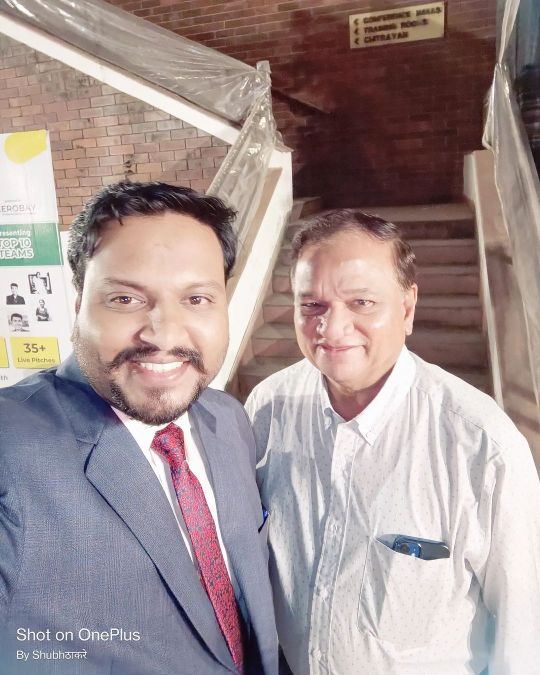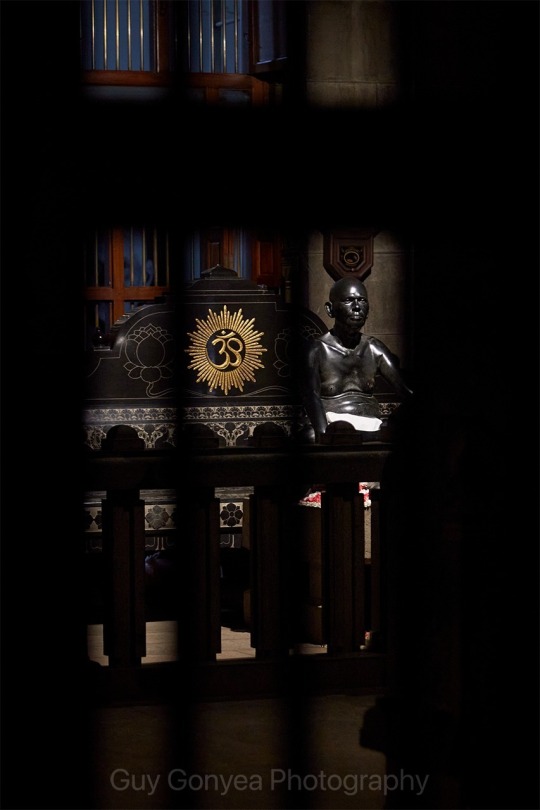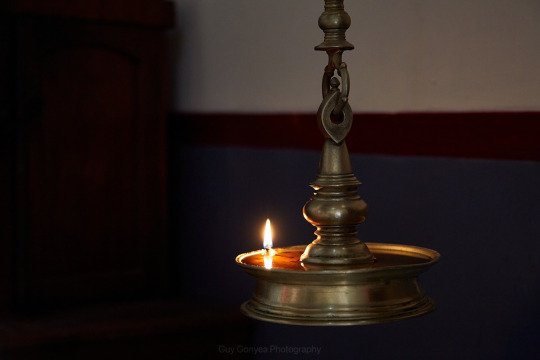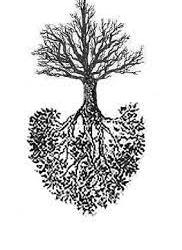#naivedyam
Video
youtube
Sabudana Khichdi Recipe (Non-sticky & Fluffy) | साबूदाने की खिचड़ी कैसे...
1 note
·
View note
Text
3 Basic offerings to goddess Varalakshmi for Shravana Shukravaram (Friday) Puja - E.A.T. easyvegrecipes
1 note
·
View note
Text
Akshaya Tritiya 2023: Date, Time And Significance; 5 Milk-Based Naivedyam Recipes
India is a land of festivals and there is no denying it. Each season brings alongside a spread of festivals which might be vibrant and vibrant, including to the vibe of the season. Keeping up with the custom, the spring season brings alongside festivals like Holi, Bihu, Rath Yatra and extra. Another well-liked pageant is Akshaya Tritiya. Also known as Akti or Akha Teej, it’s an annual spring…

View On WordPress
#akshay tritiya 2023#akshaya tritiya 2023 date#akshaya tritiya food#festival menu#naivedyam#naivedyam thali
0 notes
Photo

🎁Happy Birthday To Dilip Kamdar Sir 🎂 🤝Best Business Entrepreneur and Founder Naivedyam Restaurant Group Nagpur.🎀🍊 #SuperShubh #business #GreatBhet #Naivedyam #StopAndThink #शुभ (at Uttar Dakshin by Naivedhyam) https://www.instagram.com/p/CkgE4NKrqT3/?igshid=NGJjMDIxMWI=
0 notes
Photo

🔱 Om Namo Bhagavathe Sri ArunachalaRamanaya 🔱
Photo by Guy Gonyea
🕉️
The Paramount Importance of Self Attention, by Sri Sadhu Om, As recorded by Michael James
Part Three - Mountain Path: April-June 2012 - Excerpt
Note of 29th December 1977
🕉️
Sadhu Om (in reply to my question whether he was doing any sādhanā in the years before he came to Bhagavan):
I was longing for grace and always thinking of God. That is sādhanā enough!
Some people say that the light seen at the time of Bhagavan's passing was him returning to Skandaloka [the world of Skanda, the younger son of Lord Siva]. First they try to limit him as a body, and then they try to limit him as a light. Their minds are so bound up in limitations that they have to limit even the illimitable. Bhagavan always said:
'Do not think this body is me. I am shining in each one of you as 'I'. Attend only to that'.
How often and for how many lives have we fooled ourselves thinking that our social service is selfless? We did it only for our own self-satisfaction or glory. It is natural for each one of us to love ourself. We are all naturally selfish, so we should first find out what is self. When we knοw ourself as we really are, we will experience everything as not other than ourself, and thus our selfishness will then be the highest virtue. Only a jñāni knows how to be truly selfish, because without knowing self we cannot knοw what real (unlimited) selfishness is.
In the path of surrender saints sing, 'Send me to heaven or hell, but never let me forget you', as if heaven and hell really exist. Their prayer only shows their total love for God alone. They teach us the right attitude, but they know that heaven and hell have no real existence. All these dualities — heaven and hell, good and bad, God and individual — exist only in the mind. So ultimately we must learn to make this mind subside.
When I first came to Bhagavan and heard him repeating constantly that everyone must eventually come to the path of self-enquiry, I wondered whether he was being partial to his own teaching, but I soon understood why he insisted that this is so. The final goal is only oneness, and to experience oneness our mind must subside, which will happen entirely only when we attend to nothing other than ourself.
So long as we attend to anything other than ourself, our mind cannot subside, because attention to other things sustains it, since that which experiences otherness is only this mind. When the mind subsides completely, only self-attention remains, and self-attention alone is the state of absolute oneness. Bhagavan used to repeat this teaching every day, maybe ten or twenty times, but still we didn't change. He didn't change his teaching either, because to him this truth was so clear.
The basic mistake we all make is to take a body to be 'I'. This deeply entrenched feeling 'I am this body called so-and-so' is the root of all our trouble. If this tape-recorder is not working, we must attend to it and not to other things, because then only will we be able to repair it. Likewise, to rectify this mistaken identity, 'I am so-and-so', we must attend to it in order to knοw what it really is: what or who am I?
Only when we thus investigate ourself will the false adjunct 'so-and-so' drop off, and what will then remain is only the reality, 'I am'. 'I am so-and-so' is the naivedyam [the food to be offered to God] [1], and when Bhagavan has consumed the adjunct 'so-and-so', what remains is only 'I am', which is his prasadam [the purified remnant of God's food, which is shared among devotees as a token of his grace].
'I am' alone really exists, so it is the true form of God and guru. To treat and cherish this filthy body as 'I' is therefore the worst kind of idol-worship. If we give up this idol-worship by knowing the truth of ourself, then we can worship anything as God, because we will know that nothing is other than him, our real self.
_________
[1] Refer to Guru Vachaka Kovai, V.486

The flame of Bhagavan burns timelessly.
Photo by Guy Gonyea
#Bhagavan Sri Ramana Maharshi#the paramount importance of self-attention#Sadhu Om#Michael James#self-attention#self-attentiveness#self-surrender#surrender#detachment#'I-am-the-body'-idea#self-investigation#self-enquiry#who am i?#oneness#union with God or the reality#naivedyam food offered to God#gvk v.486
5 notes
·
View notes
Video
youtube
dasara prasadam recipes | navaratri naivedyam recipes | dussehra prasada...
#youtube#dasara recipes 2022#dussehra recipes 2022#dasara prasadam recipes#dussehra prasadam recipes 2022#prasadam recipes#naivedyam recipes#navaratri naivedyam recipes 2022#navaratri naivedyam#naivedyam 2022#food#prasadalu#puliyogare#pulihora#allam garelu#chakkara pongali#katte pongal#daddojanam#paramannam#indian recipes#foodporn#cooking#recipes#indianfestivals#rava kesari#kadabam
0 notes
Text
Ganesh Chaturthi Puja Guide: How to Celebrate with Devotion and Tradition

Ganesh Chaturthi, one of the most widely celebrated festivals in India, marks the birth of Lord Ganesha, the elephant-headed god of wisdom, prosperity, and new beginnings. This festival brings families and communities together to welcome Lord Ganesha into their homes and hearts with great devotion. Here's a comprehensive guide to performing Ganesh Chaturthi Puja, ensuring you honor the tradition while invoking the blessings of the deity.
Preparation for Ganesh Chaturthi 2024
1. Selecting the Idol:
The first step is choosing a suitable idol of Lord Ganesha. Traditionally, the idol is made of clay or eco-friendly materials. Opt for an idol that resonates with your devotion. It’s also essential to consider the size of the idol based on the space where the puja will be performed.
2. Setting Up the Puja Area:
Cleanliness is crucial in setting up the puja area. Choose a clean, sacred spot in your home, preferably facing east or west. Place a clean cloth or a wooden platform as the base. Decorate the area with flowers, rangoli, and lights, creating a festive ambiance.
3. Gathering Puja Essentials:
Before the puja begins, ensure you have all the necessary items like turmeric, kumkum, sandalwood paste, betel leaves, betel nuts, coconut, fruits, sweets (especially modaks, which are Lord Ganesha's favorite), incense sticks, diya (lamp), and flowers. Aarti thali and a small bowl of water are also essential for the rituals.
Ganesh Chaturthi Puja Guide
1. Pranapratishtha:
This is the most significant part of the Ganesh Chaturthi puja, where life is invoked into the idol of Lord Ganesha. The priest or the head of the family performs this ritual by chanting specific mantras and offering flowers, turmeric, and rice grains (akshat) to the idol. The belief is that Lord Ganesha descends into the idol to bless his devotees.
2. Shodashopachara:
After Pranapratishtha, the deity is worshipped with 16 forms of offerings known as Shodashopachara. These offerings include water for bathing the deity (Abhishek), fresh clothes, sandalwood paste, flowers, incense, light (Aarti), and naivedyam (food offerings, including modaks). Each offering is accompanied by specific chants and prayers.
3. Ganesh Aarti:
The Aarti is the most vibrant part of the puja, where devotees sing the praises of Lord Ganesha while rotating the Aarti thali in front of the idol. The Aarti, which is usually performed twice a day (morning and evening), is accompanied by the sound of bells, claps, and conch shells, creating a divine atmosphere.
4. Prasad Distribution:
Once the Aarti is completed, the prasad (sweets and fruits offered to the deity) is distributed among family members and guests. Sharing the prasad symbolizes sharing the blessings of Lord Ganesha.
5. Visarjan:
The conclusion of Ganesh Chaturthi is marked by Visarjan, where the idol of Lord Ganesha is immersed in water, symbolizing his return to Mount Kailash. The Visarjan can be done on the same day or after a specific number of days, depending on family traditions. During the Visarjan procession, devotees chant “Ganpati Bappa Morya, Pudhchya Varshi Lavkar Ya,” asking Lord Ganesha to return soon next year.
Significance of Ganesh Chaturthi
Ganesh Chaturthi is not just a religious festival but a cultural celebration that fosters unity, joy, and devotion. It’s a time when people come together to seek the blessings of Lord Ganesha for wisdom, prosperity, and the removal of obstacles. The festival also promotes the values of eco-friendliness, with an increasing emphasis on using biodegradable materials for the Ganesha idol and puja items.
Promoting Pujanpujari.com: Your One-Stop Solution for All Puja Needs
As you prepare for Ganesh Chaturthi, ensuring that all your puja essentials are in place is crucial. At PujaNPujari.com, we offer a wide range of eco-friendly Ganesh idols, puja items, and decorations that align with traditional values. Additionally, our platform provides astrology services, online pandit booking, and customized puja packages to help you perform your rituals with ease and authenticity. Let us assist you in celebrating this Ganesh Chaturthi with devotion, while also supporting sustainable practices. Visit PujaNPujari.com today to make your festival preparations complete and spiritually fulfilling.
0 notes
Text
Did You Know All About Ravana?
Let’s begin the story of Ravana. Before we start talking about Ravana, let's understand some facts and stories which you have never read before. Ravana was born to the sage Vishrava and the Asuras clan princess Kaikasi.. Villagers from Bisrakh in Uttar Pradesh claim that Bisrakh was named after Vishrava, and that Ravana was born there.
Ravana's paternal grandfather, the sage Pulasya, one of the son of Brahma, and one of the Saptarishi (seven great sages)..
His maternal grandfather was Sumali (or Sumalaya), the king of Lanka and the son of great warrior Sukesha. Sumali had ten sons and four daughters. Sumali wished for Kaikasi to marry the most knowledgeable person, so that his lineage can also be knowledgeable., so as to produce an exceptional heir. He rejected the kings of the world, and married his daughter to the sage vishrava.
youtube
Ravana performed penance on Mount Gokarna and won boons from Brahma. Ravana was blessed with a boon that would make him invincible to all the creations of Brahma, except for humans.
One of the most popular images of Shiva is called "Ravananugraha", which was popular in the Gupta era. It depicts Ravana beneath Mount Kailash playing a veena made out of his head and hands, and strings made out of his tendons, while Shiva and Parvati sit on top of the mountain.
According to scriptures, Ravana once tried to lift Mount Kailash, but Shiva pushed the mountain into place and trapped Ravana beneath it. For a thousand years, the imprisoned Ravana sang Shiva Tandava Stotra, a hymn in praise of Shiva, who finally blessed him and granted him an invincible sword called chandrahas and a powerful linga (Shiva's iconic symbol, Atmalinga) to worship.
Ravan has many qualities, he was known as ruler of the whole word at his time. He also had mastery over every veda and many scriptures. He was not only an ayurvedacharya, he was also a musician and dancer. He had expertise in many weapons and astra. Many bramhins believe that it was he who invented bhavishya shatra.
In some accounts, Ravana is said to have had Shukracharya, the priest of the Asuras, as his minister, and in other accounts, Brihaspati, the priest of the Devas.
One account narrates how Ravana ordered Brihaspati to recite the Chandi stava (mantras of Chandi), more specifically the Devi Mahatmya, in order to stave off defeat. According to the Krttivasa text, Ravana arranged for a peaceful yajna, and invited Brihaspati to start the recitation of Chandi.
youtube
Worship
Ravana is worshiped as one of Shiva's most revered followers, and he is even worshiped in some Shiva temples.
Ravana is worshiped by the Kanyakubja Brahmins of the Vidisha region, who see him as a savior and a sign of prosperity, claiming Ravana was also a Kanyakubja Brahmin. Thousands of Kanyakubja Brahmins of the village Ravangram of Netaran, in the Vidisha District of Madhya Pradesh, perform daily puja in the Ravana temple and offer naivedyam or bhog (a ritual of sacrifice to the gods).
King Shiv Shankar built a Ravana temple in Kanpur, Uttar Pradesh. The Ravana temple is open once a year, on the day of Dashera, to perform puja for the welfare of Ravana.
Ravana is also worshiped by Hindus of Bisrakh, who claim their town to be his birthplace.
The following temples in India are for Ravana as a Shiva Bhakta.
Dashanan Temple, Kanpur, Uttar Pradesh
Ravana Temple, Bisrakh, Greater Noida, Uttar Pradesh
Kakinada Ravana Temple, Andhra Pradesh
Ravangram Ravana Temple, Vidisha, Madhya Pradesh
Mandsaur, Madhya Pradesh
Mandore Ravana Temple, Jodhpur
Baijanath Temple, Kangra District, Himachal Pradesh
Conclusion
In simple terms, Ravana was a powerful character from ancient stories. He had special abilities and a strong connection to the gods. Despite his strengths, he had to make some choices against his will. However, some people still admire him for his devotion to the god Shiva. They even built temples in his honor. Ravana's story teaches us that even great powers can be flawed, and it's important to make good choices in life.
Anirvan will show us a different side of Ravana. We'll see his struggles, his strengths, and even his moments of goodness. Through the series, we'll learn more about Ravana's character and why he makes the choices he does.
By watching "Anirvan," we'll dive into Ravana's world and discover what makes him special. It's not just about good versus evil—it's about understanding the complexities of our history and culture. So, get ready to explore Ravana's story like never before in "Anirvan" and see the Ramayana in a whole new light.
1 note
·
View note
Video
youtube
Panchamirtham Recipe - Palani Temple Prasadam | Panchamrutham #panchami...
1 note
·
View note
Video
youtube
NAVARATRIDAY-3 #DASARA #NAIVEDYAM #VENPONGAL #KATEEPONGAL #gheepongal #...
0 notes
Text
E.A.T. easyvegrecipes : Bellam Appalu Recipe | How to make Bellam Appalu | Sweet Appalu | (Wheat Flour Delicacy)
0 notes
Text
Reshmi Paneer Chaap in Naivedyam Restaurant Pune
Reshmi Paneer Chaap (190rs)
Thank you for reading my blog. Hope you enjoyed the video. Please view my other videos at Umakant’s Youtube or at Soubhagya’s Youtube channel. If you like my videos then please subscribe to the YouTube channel.
youtube
View On WordPress
0 notes
Photo

🕉️ 🔱 Om Namo Bhagavathe Sri ArunachalaRamanaya 🔱 🕉️
Fotografia de Guy Gonyea
A Importância Suprema da Auto-Atenção, por Sri Sadhu Om, conforme registado por Michael James
Parte Três - “Mountain Path” (O Caminho da Montanha): Abril-Junho de 2012 - Excerto
Anotação de 29 de Dezembro de 1977
🕉️
Sadhu Om (em resposta à minha pergunta se ele costumava fazer alguma sādhanā nos anos anteriores a vir para junto de Bhagavan):
Eu ansiava pela graça e pensava sempre em Deus. Isso é sādhanā suficiente!
Algumas pessoas dizem que a luz que foi vista no momento do falecimento de Bhagavan era ele retornando a Skandaloka [o mundo de Skanda, o filho mais novo do Senhor Shiva]. Primeiro tentam limitá-lo como um corpo, depois tentam limitá-lo como uma luz. As suas mentes estão tão presas em limitações que precisam limitar até o ilimitado. Bhagavan sempre dizia:
'Não pense que este corpo é eu. Eu estou a brilhar em cada um de vocês como 'Eu'. Atenda apenas a isso'.
Quantas vezes e por quantas vidas nos enganámos a nós mesmos pensando que o nosso serviço social é altruísta? Fizemos isso apenas para nossa própria satisfação ou glória. É natural que cada um de nós ame a si mesmo. Todos nós somos naturalmente egoístas, então devemos primeiro descobrir o que é o ‘eu’. Quando nos conhecermos como realmente somos, experimentaremos tudo como não separado de nós mesmos e, assim, o nosso egoísmo será a mais alta virtude. Só um jñāni sabe como ser verdadeiramente egoísta, porque sem conhecer o ‘eu’ não podemos conhecer o que o verdadeiro (ilimitado) egoísmo é.
No caminho da rendição, os santos cantam: 'Manda-me para o céu ou para o inferno, mas nunca me deixes esquecer-Te', como se o céu e o inferno realmente existissem. A sua oração só mostra o seu amor total por Deus. Eles nos ensinam a atitude correta, mas sabem que o céu e o inferno não têm existência real. Todas essas dualidades — céu e inferno, bom e mau, Deus e indivíduo — existem apenas na mente. Então, em última análise, devemos aprender a fazer essa mente retroceder.
Quando vim para junto de Bhagavan, no início, ao ouvi-lo repetir constantemente que todos devem finalmente chegar ao caminho da auto-investigação, eu me perguntei se ele estava a ser parcial com os seus próprios ensinamentos, mas logo entendi por que é que ele insistia que assim era. O objetivo final é apenas a unidade, e para experimentar a unidade a nossa mente deve retroceder, o que acontecerá inteiramente só quando não prestarmos atenção a nada mais além de nós mesmos.
Enquanto prestarmos atenção a qualquer outra coisa além de nós mesmos, a nossa mente não pode retroceder, porque a atenção a outras coisas a sustenta, já que o que experimenta a alteridade é apenas essa mente. Quando a mente retrocede completamente, apenas a auto-atenção permanece, e somente a auto-atenção é o estado de unidade absoluta. Bhagavan costumava repetir esse ensinamento todos os dias, talvez dez ou vinte vezes, mas mesmo assim não mudámos. Ele também não mudou o seu ensinamento, porque para ele essa verdade era muito clara.
O erro básico que todos cometemos é considerar um corpo como 'eu'. Esse sentimento profundamente arraigado "eu sou este corpo chamado fulano de tal" é a raiz de todos os nossos problemas. Se este gravador não estiver a funcionar, devemos cuidar dele e não de outras coisas, porque só assim poderemos consertá-lo. Da mesma forma, para corrigir esta identidade equivocada, 'eu sou fulano de tal', devemos prestar atenção a ela para saber o que realmente é: o que ou quem sou eu?
Somente quando investigarmos a nós mesmos, o falso adjunto 'fulano de tal' desaparecerá, e o que permanecerá então é apenas a realidade, 'eu sou'. 'Eu sou fulano de tal' é o naivedyam [o alimento a ser oferecido a Deus] [1], e quando Bhagavan tiver consumido o adjunto 'fulano de tal', o que resta é apenas 'eu sou', que é o seu prasadam [o remanescente purificado do alimento de Deus, que é compartilhado entre os devotos como um sinal de sua graça].
Somente 'Eu sou' realmente existe, então é a verdadeira forma de Deus e guru. Tratar e cuidar deste corpo grosseiro como 'eu' é, portanto, a pior das idolatrias. Se desistirmos da adoração deste ídolo, ao conhecermos a verdade de nós mesmos, então podemos adorar qualquer coisa como sendo Deus, porque saberemos que nada é diferente dele, o nosso verdadeiro ser.
_______
[1] Observar: Guru Vachaka Kovai, V. 486

🕉️ 🔱 Arunachala 🔱 🕉️
Fotografia de Guy Gonyea
#Bhagavan Sri Ramana Maharshi#a importância suprema da auto-atenção#Sadhu Om#Michael James#auto-atenção#auto-entrega#rendição#desapego#ideia-'eu-sou-o-corpo'#auto-inquirição#auto-investigação#quem sou eu?#unicidade#união com Deus ou a realidade#naivedyam alimento oferecido a Deus#gvk v.486
0 notes
Text

Food Offering To Chandra – Moon God In Hinduism
By Abhilash Rajendran Monday, November 28, 2022
Chandra, the Moon God in Hinduism, is one of the Navagrahas – the nine celestial bodies. They are propitiated for overcoming bad luck in life and to solve horoscope related problems. Food offering or bhog or naivedya to Moon is part of the pujas and rituals. The details regarding flowers, food offerings, herbs, etc are found in the Matsya Purana.
The main food offering to Moon is sweet made of ghee and milk especially white in color. Any sweet offering made from rice sprinkled with white flowers is the ideal bhog or naivedyam to Chandra Bhagavan.
Is this essentially this hindu cult,no way?They adore him and give all milks from cows and butter every day so he can be fatty little shit.I know,they made idol in form of moon god,now they mix every herb with milk,honey or butter.Just to fatten everyone.Those priestes are full of this lustiful and greedy from milk from another species.Like,we can't make milk on our own?Every hindu temple,every this offering,is always milk from cow of butter,or ghee.I can only conclude this is because hindu believe that if they drink enough milk that they will be clever and see god.This myth is really Chandra.This cycle of abuse and continuous slavery of every animal is really this?The green and blue,living on the offering.People think he is god,but actually lustiful Chandra and his shit pretending he is true god.No,he is lying big time.Just read whole Budhist concept,and blue firery shit do exit.
Going up and down,but why?Continuous suffering because somebody didin't listen to his wish.He rooted evil and now everyone is suffering.


0 notes
Text
padmavati temple tirupati timings

padmavati temple tirupati timings
Tiruchanoor Padmavathi Devi Temple Pooja Timings
Abhishekam will be performed on Friday’s which costs Rs.400 per person
Vastralankarana Seva will be performed on Friday’s which costs Rs.1000 for a family.
For Abhishekam and Vastralankara Seva tickets, one has to submit Id proof a day in advance at the counter
Kumkum Archana will be performed daily from 12:30 pm to 4:45 pm which costs Rs.200 per person
Tiruppavada will be performed on Thursday’s which costs Rs.600 per person
Astadalapada Padmaradhanamu will be performed on Monday’s, which costs Rs.300 per person
Devotees can participate in the Ekantha Seva. Ticket costs Rs.25 per person. Tickets have to be purchased at the counter.
Tiruchanoor Padmavathi Devi Temple Darshan Timings
Morning Hours: 5:25 am to 6:00 am and 7:30 am to 12:00 pm
Afternoon Hours: 12:00 pm to 6:00 pm
Evening Hours: 7:00 pm to 8:45 pm.
Temple remains open in the afternoon hours as well. Darshan break will be there during Naivedyam. The above-mentioned Tiruchanur Temple timings might change on special days.
The crowd will be high on Sat, Sun, Public Holidays, Navaratri, Varalakshmi Vratham day, Vaikunta Ekadasi, Vaikunta Dwadasi, 1Jan, Ugadi and other festival days.
TO KNOW MORE CONTACT US ON : [email protected]
0 notes